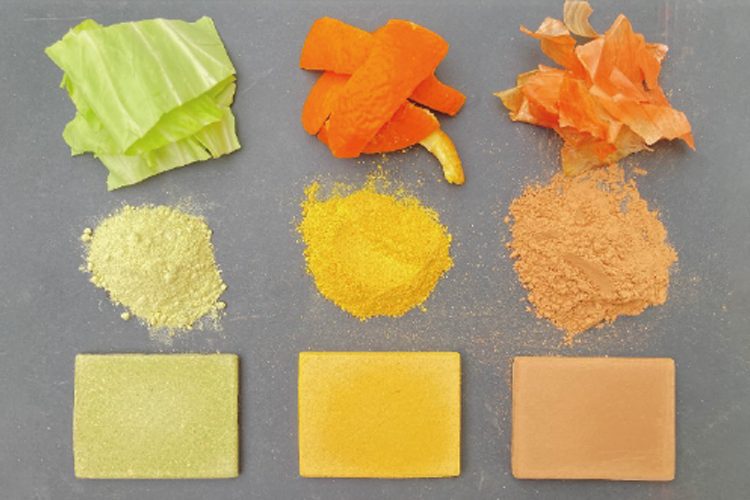The development is the work of specialists from the Institute of Industrial Sciences at the University of Tokyo.
Japanese scientists have created a new building material, for the production of which they used food waste, the Daily Mail writes.
The development is the work of specialists from the Institute of Industrial Sciences of the University of Tokyo.
For the new building material, scientists have used banana peels, cabbage leaves, algae, and other food waste. Initially, they were dried to a powdery state, after which they were mixed with water and subjected to strong heat, adds BTA.
The tests performed show that the obtained material exceeds the target bending strength and does not yield to the strength of the concrete.
Scientists also used salt and sugar to create the new building material, but they did not affect its strength.
Researchers at the University of Tokyo are squeezing cabbage, fruit peels, and other food scraps into sturdy building material.
The witch in Hansel and Gretel’s tale may have been something about her edible house and attractiveness to children. A research team from the Institute of Industrial Sciences at the University of Tokyo has discovered how to make durable, healthy, and still edible building materials from food.
Sprinkled cabbage leaves, seaweed, and banana peels may not be as exciting as gingerbread and pastries, but they could be part of a sustainable construction product recipe.
“Our goal was to use ordinary seaweed and food scraps to build materials that are at least as strong as concrete,” said Yuya Sakai, a specialist in sustainable building materials and lead author of an upcoming material study, on Tuesday. food waste, we also wanted to determine if the recycling process has affected the taste of the original materials. ”
The team is testing a hot pressing technique commonly used to compress wood dust into building materials. Instead of wood, they are vacuum dried and then sprayed with a variety of food waste, including onion and fruit peels, as well as cabbage.
“The processing technique consists of mixing the food powder with water and spices, then pressing the mixture into a mold at high temperature,” the university said. All products obtained, except for the pumpkin skin, passed the team’s stress tests.
Researchers have found a solution to the pumpkin problem. “We also found that Chinese cabbage leaves, which produce material more than three times stronger than concrete, can be mixed with a weaker pumpkin material to provide effective strengthening., said Kota Machida, project associate.
The molded materials remained edible, although the team did not say whether they were difficult to chew. Even leaving the materials exposed to the air for four months did not change the taste and there was no problem with decay.
The development of potentially plasterable materials is still at an early stage, but maybe one day you could build your own home from them. This will lead the witch’s house to the modern age.












 English
English French
French Spanish
Spanish German
German Dutch
Dutch Italian
Italian Danish
Danish Portuguese
Portuguese Greek
Greek Russian
Russian Swedish
Swedish Bulgarian
Bulgarian Hungarian
Hungarian Catalan
Catalan Ukrainian
Ukrainian Polish
Polish Basque
Basque Chinese (Simplified)
Chinese (Simplified) Japanese
Japanese Hebrew
Hebrew Arabic
Arabic Swahili
Swahili Amharic
Amharic Irish
Irish Afrikaans
Afrikaans Albanian
Albanian Armenian
Armenian Azerbaijani
Azerbaijani Belarusian
Belarusian Bengali
Bengali Bosnian
Bosnian Cebuano
Cebuano Chichewa
Chichewa Chinese (Traditional)
Chinese (Traditional) Corsican
Corsican Croatian
Croatian Czech
Czech Esperanto
Esperanto Estonian
Estonian Filipino
Filipino Finnish
Finnish Frisian
Frisian Galician
Galician Georgian
Georgian Gujarati
Gujarati Haitian Creole
Haitian Creole Hausa
Hausa Hawaiian
Hawaiian Hindi
Hindi Hmong
Hmong Icelandic
Icelandic Igbo
Igbo Indonesian
Indonesian Javanese
Javanese Kannada
Kannada Kazakh
Kazakh Khmer
Khmer Korean
Korean Kurdish (Kurmanji)
Kurdish (Kurmanji) Kyrgyz
Kyrgyz Lao
Lao Latin
Latin Latvian
Latvian Lithuanian
Lithuanian Luxembourgish
Luxembourgish Macedonian
Macedonian Malagasy
Malagasy Malay
Malay Malayalam
Malayalam Maltese
Maltese Maori
Maori Marathi
Marathi Mongolian
Mongolian Myanmar (Burmese)
Myanmar (Burmese) Nepali
Nepali Norwegian
Norwegian Pashto
Pashto Persian
Persian Punjabi
Punjabi Romanian
Romanian Samoan
Samoan Scottish Gaelic
Scottish Gaelic Serbian
Serbian Sesotho
Sesotho Shona
Shona Sindhi
Sindhi Sinhala
Sinhala Slovak
Slovak Slovenian
Slovenian Somali
Somali Sundanese
Sundanese Tajik
Tajik Tamil
Tamil Telugu
Telugu Thai
Thai Turkish
Turkish Urdu
Urdu Uzbek
Uzbek Vietnamese
Vietnamese Welsh
Welsh Xhosa
Xhosa Yiddish
Yiddish Yoruba
Yoruba Zulu
Zulu